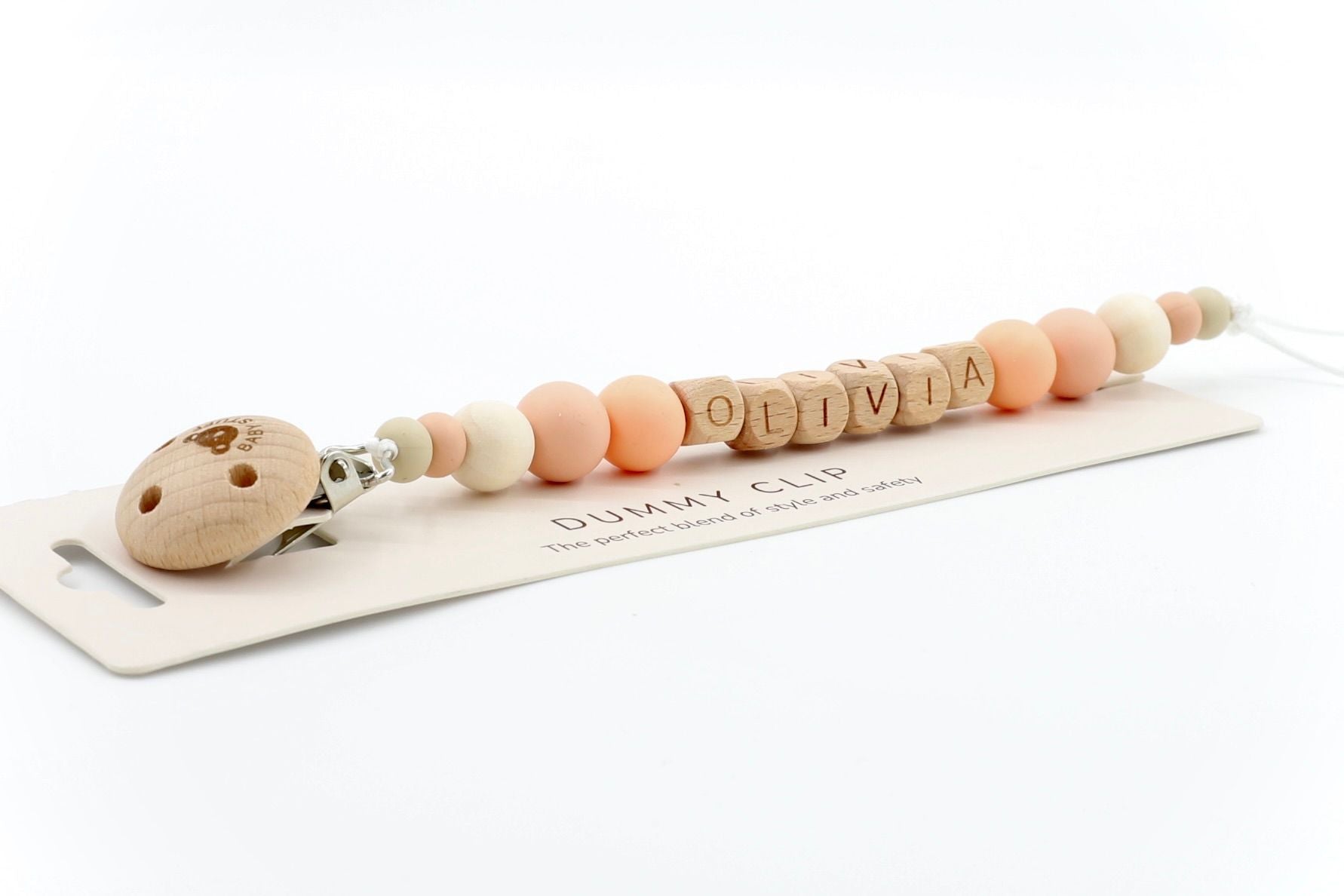The Hidden Danger in That Cute Dummy Clip
The Hidden Risk in That Cute Clip: What Every Parent Should Know About Dummy Chain Safety
When it comes to newborn accessories, it’s easy to be drawn in by soft colours, sweet shapes, and handcrafted charm. We see them all over Instagram and Facebook — personalised dummy clips with hearts or bears, often made by local sellers or home businesses. They may look adorable, but some of them could pose a serious safety risk to your baby.
Take the heart-shaped clips shown in this example. They’re smooth and visually appealing. But there’s one critical feature they lack: ventilation holes. According to EN 12586:2007+A1:2011, any clip larger than 25mm in diameter must include air holes to reduce the risk of suffocation should the clip be accidentally swallowed or lodged in a baby's mouth. These clips exceed that size — and the absence of ventilation makes them potentially dangerous.
Why Ventilation Holes Matter
Ventilation holes are not just a design detail. They are a critical safety feature. If a baby manages to get a clip into their mouth, those small holes allow air to pass through. Without them, the clip can completely obstruct the airway, leaving the child unable to breathe. That is precisely why this requirement is baked into European safety legislation — not as a guideline, but as a life-saving standard.
The updated EN 12586:2025 standard reinforces these requirements further, ensuring that all dummy clips are tested for airflow and choking hazards. CE compliance experts confirm that any clip larger than 25mm must include holes of at least 4mm in diameter (source). Additional resources, such as Australian and UK safety advisories, echo this requirement universally.
The Problem with Handmade Clips
Sadly, many handmade dummy clips do not meet these standards. While they may be sold in good faith, they are often produced without the knowledge or oversight required to ensure infant safety. The clips in the image — although charming — are an example of form being prioritised over function. If one of these large, ventless clips were to be mouthed or sucked on by a baby, the risk of suffocation would be dangerously high.
This is not alarmism. This is about awareness. Small businesses and craft sellers might not even know they’re breaching regulations, but ignorance doesn’t remove the risk. And for parents, especially new ones, it can be difficult to tell what’s safe and what’s not just by looking at a cute product photo.
BabyStuff’s Approach to Clip Safety
At BabyStuff, we take these standards seriously. We only use dummy clips that meet or exceed EN 12586 guidelines. Specifically, we ensure that:
- All clips over 25mm in diameter include ventilation holes to prevent airway obstruction.
- Each component is strength-tested and securely attached to prevent breakage or detachment.
We don’t believe safety should ever be optional — and we certainly don’t believe it should be sacrificed for aesthetics. Every clip we offer is chosen with both function and peace of mind in mind. Cute can still be safe, and we won’t settle for less.
What Parents Should Look For
When choosing a dummy clip — especially from handmade sellers — we strongly recommend doing a few quick checks:
- Ensure any clip larger than 25mm has visible ventilation holes.
- Ask the seller whether their clips comply with EN 12586 or CE toy safety guidelines.
- Be cautious of overly large, novelty-shaped clips with no airflow design.
- If in doubt, don’t risk it — your baby’s safety is worth more than a design trend.
Final Thoughts
We understand the appeal of soft, handmade baby items. But when it comes to anything that sits near your baby's face, mouth, or airway, safety has to come first. Ventilation holes may seem like a small thing, but they can be the difference between a scare and a tragedy. At BabyStuff, we’re proud to uphold that standard — and we’ll never sell something that we wouldn’t use for our own child.
If you ever have a question about the safety of a dummy clip — whether it’s one of ours or one you’ve seen elsewhere — we’re happy to help.


Leave a comment